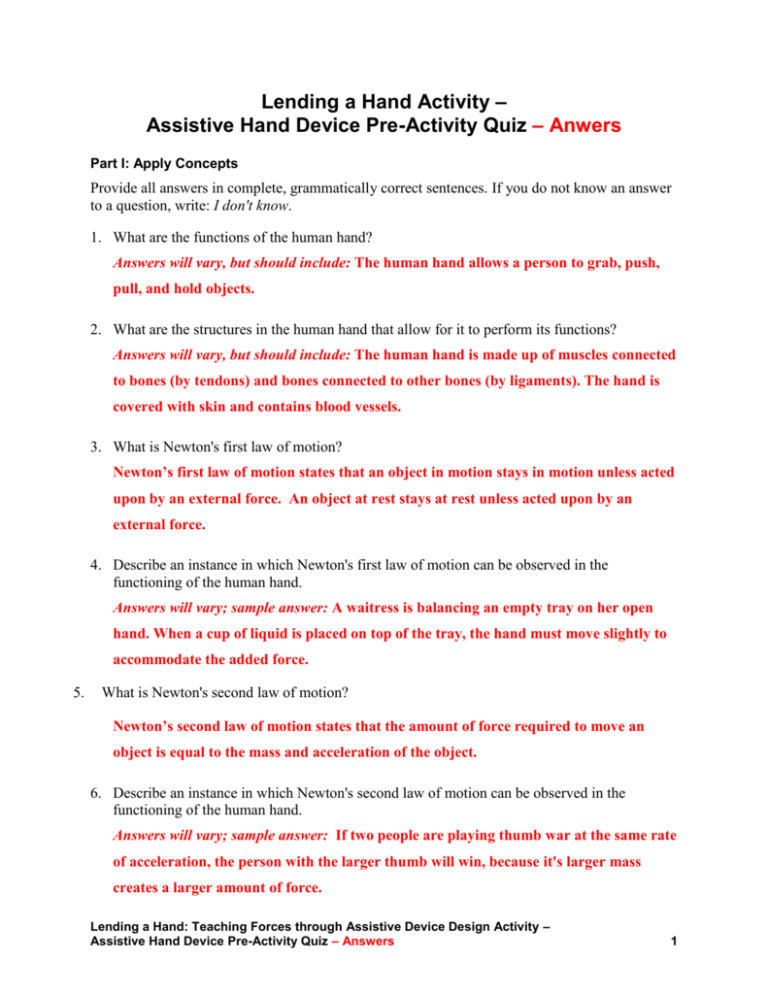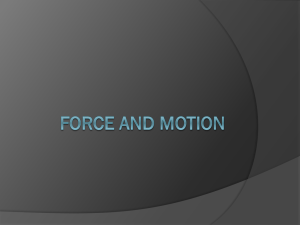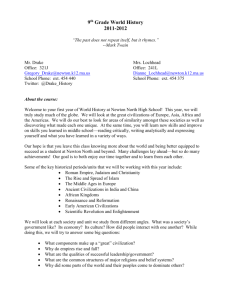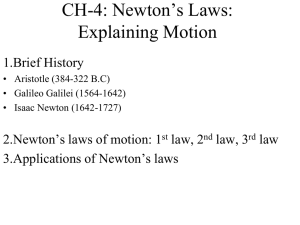Assistive Hand Device Pre-Activity Quiz Answer Key
advertisement

Lending a Hand Activity – Assistive Hand Device Pre-Activity Quiz – Anwers Part I: Apply Concepts Provide all answers in complete, grammatically correct sentences. If you do not know an answer to a question, write: I don't know. 1. What are the functions of the human hand? Answers will vary, but should include: The human hand allows a person to grab, push, pull, and hold objects. 2. What are the structures in the human hand that allow for it to perform its functions? Answers will vary, but should include: The human hand is made up of muscles connected to bones (by tendons) and bones connected to other bones (by ligaments). The hand is covered with skin and contains blood vessels. 3. What is Newton's first law of motion? Newton’s first law of motion states that an object in motion stays in motion unless acted upon by an external force. An object at rest stays at rest unless acted upon by an external force. 4. Describe an instance in which Newton's first law of motion can be observed in the functioning of the human hand. Answers will vary; sample answer: A waitress is balancing an empty tray on her open hand. When a cup of liquid is placed on top of the tray, the hand must move slightly to accommodate the added force. 5. What is Newton's second law of motion? Newton’s second law of motion states that the amount of force required to move an object is equal to the mass and acceleration of the object. 6. Describe an instance in which Newton's second law of motion can be observed in the functioning of the human hand. Answers will vary; sample answer: If two people are playing thumb war at the same rate of acceleration, the person with the larger thumb will win, because it's larger mass creates a larger amount of force. Lending a Hand: Teaching Forces through Assistive Device Design Activity – Assistive Hand Device Pre-Activity Quiz – Answers 1 7. What is Newton's third law of motion? Newton’s third law of motion states that for every action, there is an equal and opposite reaction. 8. Describe an instance in which Newton's third law of motion can be observed in the functioning of the human hand. Answers will vary; sample answer: Person A has her hand open, raised in the air. Person B uses his open hand to slap Person A’s hand. This high five causes A’s hand to move backwards, due to the added force. Part II: Matching For the definition, identify the type of force by writing one of the terms provided in the Word Bank below. Word Bank gravity, normal, tension, compression, shear, bending, applied force, friction, air resistance 1. Two pushing (or pulling) forces opposing each other, but not directly across from each other. __shear____ 2. An added force (not directly across from support forces) that causes compression on one side and tension on the other. __bending___ 3. A force that pulls objects towards the center of the Earth; force that pulls objects towards some massively large object. ___gravity____ 4. Force applied to (exerted on) an object by another object. ___applied force______ 5. Slowing-down force; exerted by a surface as an object moves across it. ___friction______ 6. Type of frictional force that slows down objects as they travel through air. _air resistance___ 7. Support force; exerted upon an object that is in contact with a stable object. ___normal____ 8. Two pushing forces, directly opposing each other that squeeze an object to try to squash, or compress, it. __compression____ 9. Two forces pulling in opposite directions; the force used to stretch an object by pulling it apart. __tension___ Lending a Hand: Teaching Forces through Assistive Device Design Activity – Assistive Hand Device Pre-Activity Quiz – Answers 2









